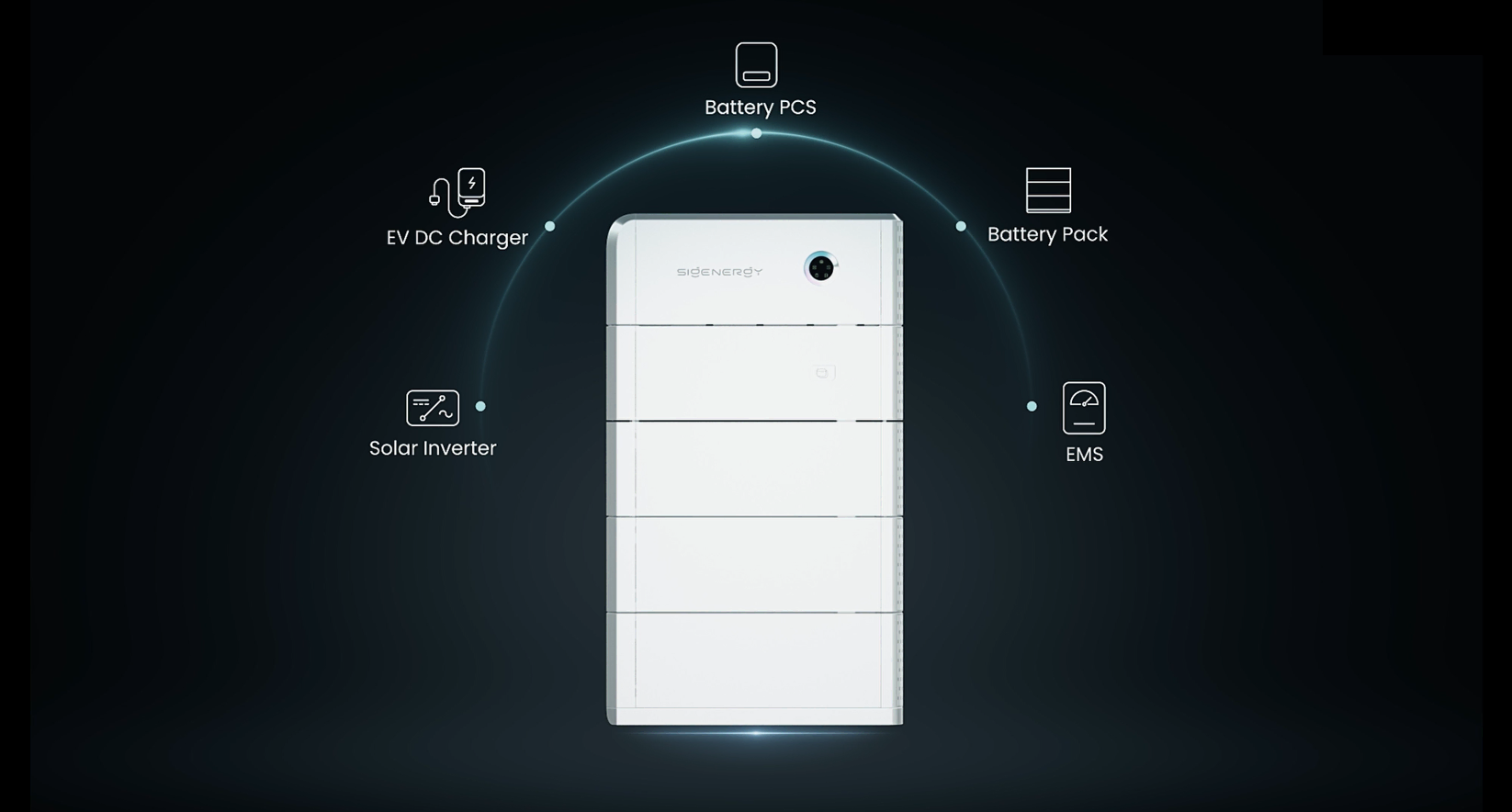Now and again, a product comes to Australia, captivating the attention of solar energy enthusiasts. With world-renowned leading brands that already exist who are consistently innovating to stay ahead, something must be unique for something new to stand out and earn market share. In 2024, Sigenergy’s SigenStor will disrupt established brands in energy self-sufficiency with one of the most innovative all-in-one solutions, empowering users towards superior energy independence. Here’s why.
Contents
Key points
- Built on a software foundation
- Ultra efficient DC coupled ecosystem: inverter, battery, EV charger
- Bidirectional EV charging capabilities
- Flexible and upgradable with ease
- Global case studies convincingly good
Built on a software-first foundation, Sigenergy is a manufacturer set to outpace most in the new generation of self-sufficient energy supplies. Developing new energy hardware this decade from the ground up enables innovators to think outside the box regarding a preconceived evolutionary process. With modern user experience now in the palm of one’s hand, what if an energy product for the mainstream was developed from a software-first perspective? Such a design would remove specific hardware limitations, ensuring it adapts perfectly to modern user experiences and expectations as they evolve.
Even though existing energy technologies possess excellent monitoring and control software, limitations restrict the release of software/firmware updates required in a consistently evolving landscape. Most manufacturers have one universal web application for their products, old and new. New updates must consider all hardware models, ensuring a stable user experience. The more expansive a product range, the more diligent a software/firmware release must be, and this takes time.
Which to consider?
Even though installation professionals will have to adapt to a new way, the beauty of Sigenergy’s product offering is in its simplicity, and your only consideration of which foundations to consider initially depends on your power supply: single or three-phase. Rumour surrounds a potential inverter-only solution (as in other markets) to remove specific market barriers around a basic package’s initial cost. Therefore, the foundation of the Sigenergy energy product range is the controller/inverter, and the broader energy ecosystem products follow that. Greater consideration begins within the broader expansion options/ecosystem.
How to identify if you have a single or three-phase power supply ›
1-phase controller: Single-phase solar, battery and EV charging controller/inverter. Intelligent all-in-one technology for the modern energy user. DC solar and DC battery (hybrid) to AC grid-tie or off-grid inverter, compatible with the DC-coupled SigenStor battery and DC-coupled Sigenergy EV charger module.
3-phase controller: Three-phase solar, battery and EV charging controller/inverter. Intelligent all-in-one technology for the modern energy user. DC solar and DC battery (hybrid) to AC grid-tie or off-grid inverter, compatible with the DC-coupled SigenStor battery and DC-coupled Sigenergy EV charger module.
Remarkably, all size models (3 to 29.9 kW) of Sigenergy controllers/inverters are identical in dimensions.
Savings alert. Get your copy of the latest catalogue for hassle-free, competitive prices.
The Sigenergy expanded ecosystem
From 2024, home and commercial self-generated power supplies will form part of a user-empowered energy ecosystem. The more efficiently you control and harness internally generated electron flow, the more you save purchasing from the grid. Today, the choice is a disconnected analogue-style solar energy system or an all-encompassing, digitally connected energy ecosystem. Sigenergy changes this.
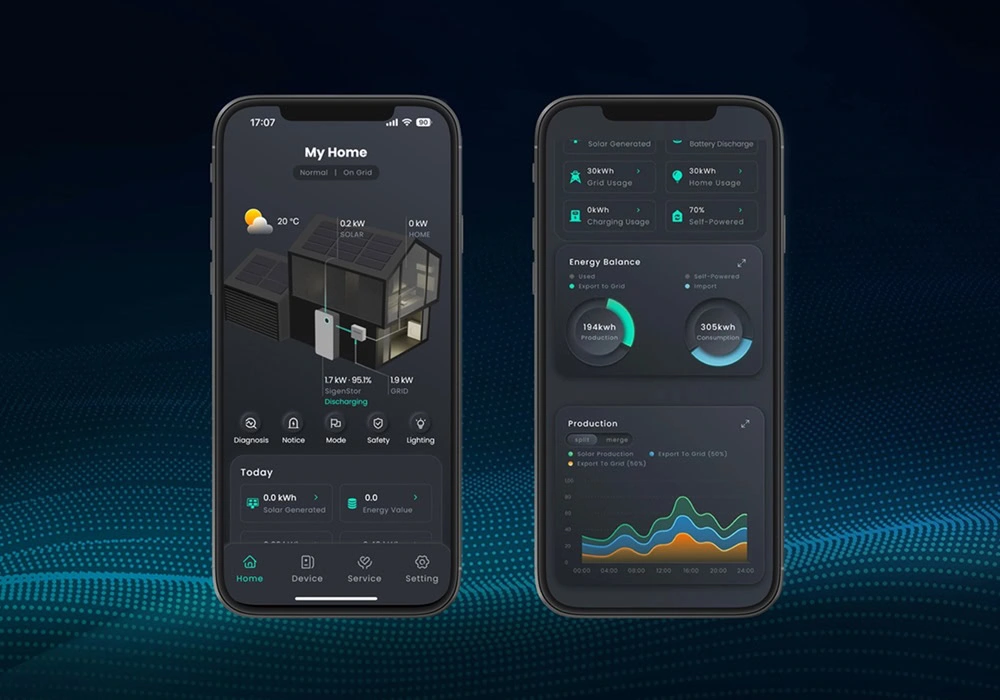
The mySigen App is where the Sigenergy energy ecosystem comes together for communicative harmony. Purchase add-on hardware such as DC Bidirectional EV charging and versatile 5 and 8 kWh storage modules. Considering such versatility, it’s rare that two SigenStor neighbours are ever the same. You use your power differently from your neighbour and deserve a custom solution. Previously, more bespoke solutions were expensive to achieve, adding significant cost barriers for the mainstream. SigenStor is a testament to commercially viable custom design with the ideal modular add-on features to suit the end-user (you).
Model | Attribute | Advantages | Download | |
|---|---|---|---|---|
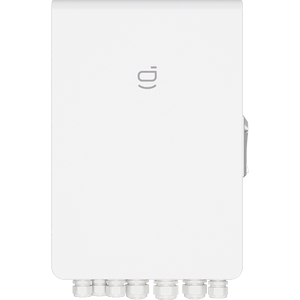 | Gateway | Energy monitoring & signalling. Backup power and load control | View energy import and export from the point of supply within mySIgen App. Provides surplus energy signalling/control to ecosystem devices. Manage power distribution under normal operation and during blackout scenario’s | Datasheet |
 | Battery | DC coupled energy storage (HV). 5 or 8 kWh modular options. | Store excess solar energy for later use. Provide blackout protection when installing additional circuitry and Gateway. | Datasheet |
 | EV Charger: DC | Electric vehicle charging. 12.5 kW or 25 kW. | Ultra-efficient charging with V2X options. Intelligently charge your electric vehicle with excess solar energy without exporting to the grid (EnergycMeter required). | Datasheet |
 | EV Charger: AC | Electric vehicle charging. 7/11/22 kW | Intelligently charge your electric vehicle with excess solar energy without exporting to the grid (Energy Meter required). | Datasheet |
 | my Sigen App | Real-time & historical energy portal | Online visual gateway to advanced energy insight, management and control with AI assistance. | Datasheet |
Energy Meter: The Sigenergy energy meter is mounted within a switchboard to provide energy consumption and export data to the mySigen App when used alongside a SigenStor product where a Gateway is not required.
SigenStor Battery: Enjoy enhanced solar array sizing flexibility through safe, low-voltage DC-coupled solar battery technology while providing superior value on a cost-per-kWh basis compared to similar DC-coupled batteries. We recommend all customers discern battery prices on a cost per kWh level to understand the true cost.
Total cost ÷ combined useable kWh = True cost per kWh. Spoiler: Using this knowledge, SigenStor is remarkably priced to its relative competition.
DC Charger: One of the most significant features seen yet in an energy solution. Not only does the Sigenergy DC EV charger maximise self-generated energy utilisation by reducing conversion losses, but it also can provide bidirectional charging capabilities should the DNSP (Distributed Network Service Provider – your power company) approve such a function with grid connectivity. Game-changing!
AC Charger: The Sigenergy AC electric vehicle (level 2) fast charger has all the features one would expect from a solar-optimised charging option boasting a more affordable price point when compared to its DC charging counterpart. Available in single phase up to 7 kW or three-phase up to 22 kW.
mySigen App: Built on a software-first platform, mySigen’s App is one of the most advanced. Software is how sustainable energy ecosystems communicate with us for enhanced user experience, affecting the most significant energy-saving potential. mySigen excels compared to conventional monitoring platforms because it integrates GPT-4 capabilities for action, reporting, diagnosis and support. Extended reading: Sigenergy defines a new digital battery era ›
Sigenergy certified installer. Ensure a quote by a proven and local Sigenergy partner.
Sigenergy warranty
Ten years for major components such as the battery and controller/inverter. Perhaps what could also be considered a major component is the Gateway. However, the Sigenergy Gateway only includes two years of guaranteed cover. Understandable, considering the potential variance between unique installations’ use and power supply conditions. Installations prone to less stable power supplies are more likely to induce additional wear on the gateway relays and electronics. Reviewing similar hardware, two years on control devices such as the Sigenergy Gateway is comparative.
It’s important to remember specific exclusions apply, such as failure to comply with Sigenergy’s operating instructions and installation guide. The simplest solution to ensure a Sigenergy product warranty is dependable for the enduring period, including installation workmanship, is to purchase through Perth Solar Warehouse, a founding/proven Sigenergy partner in Western Australia.
Covered Product | Covered Part* | Warranty Period |
|---|---|---|
SigenStor | Sigen Battery | 10 years
|
Sigen Energy Controller | 10 years
| |
Accessories | Sigen Energy Gateway
| 2 years
|
Sigen Power Sensor | 2 years | |
Sigen Communication Module | 2 years |
Review the attached warranty download for the complete list of exclusions, warranty definitions, warranty extension options, the warranty claims process, and your Rights at law.
Where are they made
Operating in more than 30 countries and with seven global offices/support centres, including Sydney, Australia, Sigenergy SigenStor products are manufactured in the heart of modern automated process: Shanghai, China. Set on a 20,000-square-meter facility, energy investors can rest assured of the tightest quality control processes before delivery. Featuring R&D, lab testing, and assembly, Sigenergy has invested in superior outcomes without outsourcing critical componentry.
What do they cost
It is a unique product to compare on cost due to its all-in-one modular design and the fact that there is yet to be competition to compete directly. More likely than not, new mainstream competition will emerge from Sigenergy’s revolutionary design towards energy independence.
We’ve left out solar panels for relative battery comparison costs. However, it’s important to remember that the cost of p/kWh includes the Sigen Energy Gateway, slightly inflating comparative DC-coupled battery figures. What is apparent is that increasing the combined energy density reduces the cost per kWh due to the one-off investment in critical components of the controller, gateway and preliminary installation.
Tip: The 8 kWh (7.8 kWh useable) SigenStor module provides the best value per kWh compared to the 5 kWh unit. Multiples of 8 kWh modules significantly reduce the cost per kWh when purchased through Perth Solar Warehouse, ensuring an improved likelihood of bill reduction success through superior energy density.
1. Approximate cost per kWh installed, based on values relevant within 30 days of the article post date.
2. All EV charger costs listed on Perth Solar Warehouse exclude installation for universal comparison.
The above-listed prices are general only. Ensure our best Sigenergy product prices: Get your copy of the latest Perth Solar Warehouse catalogue with variable size options.
Final chance. Your copy of the latest Perth Solar Warehouse catalogue.
Pairing options
If installing as part of a new solar energy system, the ideal solar panel is often the next consideration. The following three solar panels complement SigenStor energy systems by Perth Solar Warehouse.

Reputation: Risen Energy has a reputation in Australia as a preferred solar panel brand incorporated within utility-scale projects such as the Merredin solar farm. Learn more ›
$$
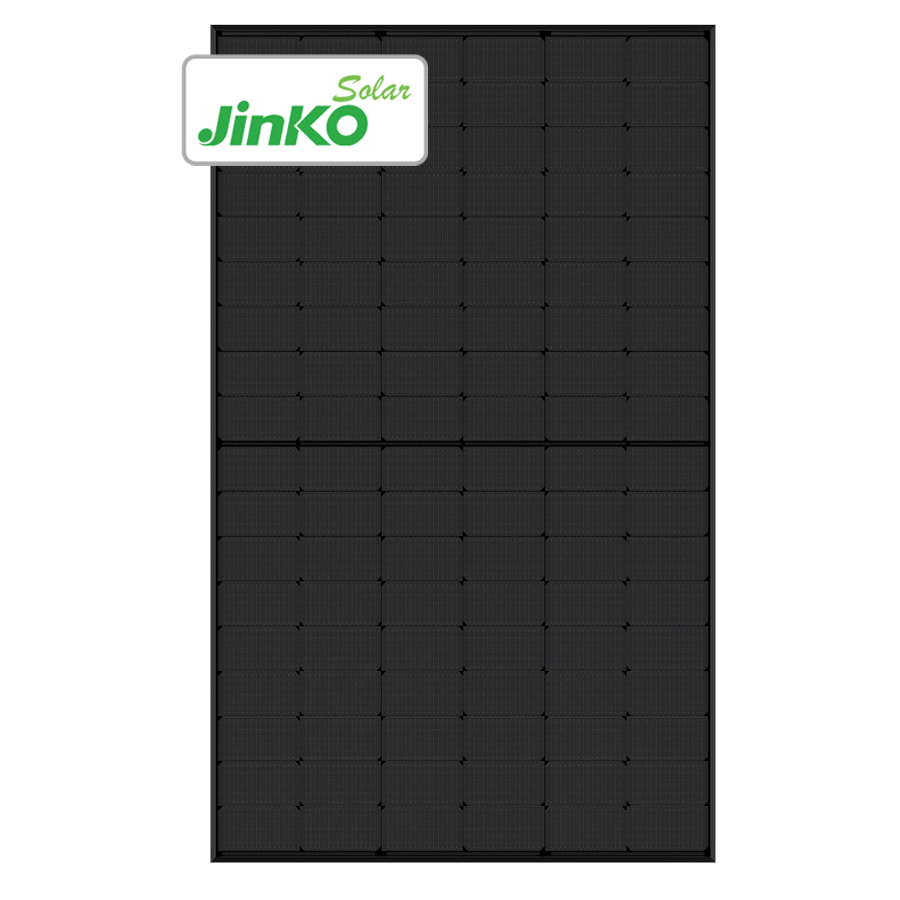
N-Type module: More than a new era n-type module, the Jinko Tiger Neo combines superior durability and performance for assured energy investment. Jinko reins as one of Australia’s favourite solar panel brands with over 1,000,000 Jinko Tiger Neo 440W n-type solar panels shipped (Aug 2023). Learn more ›
$$
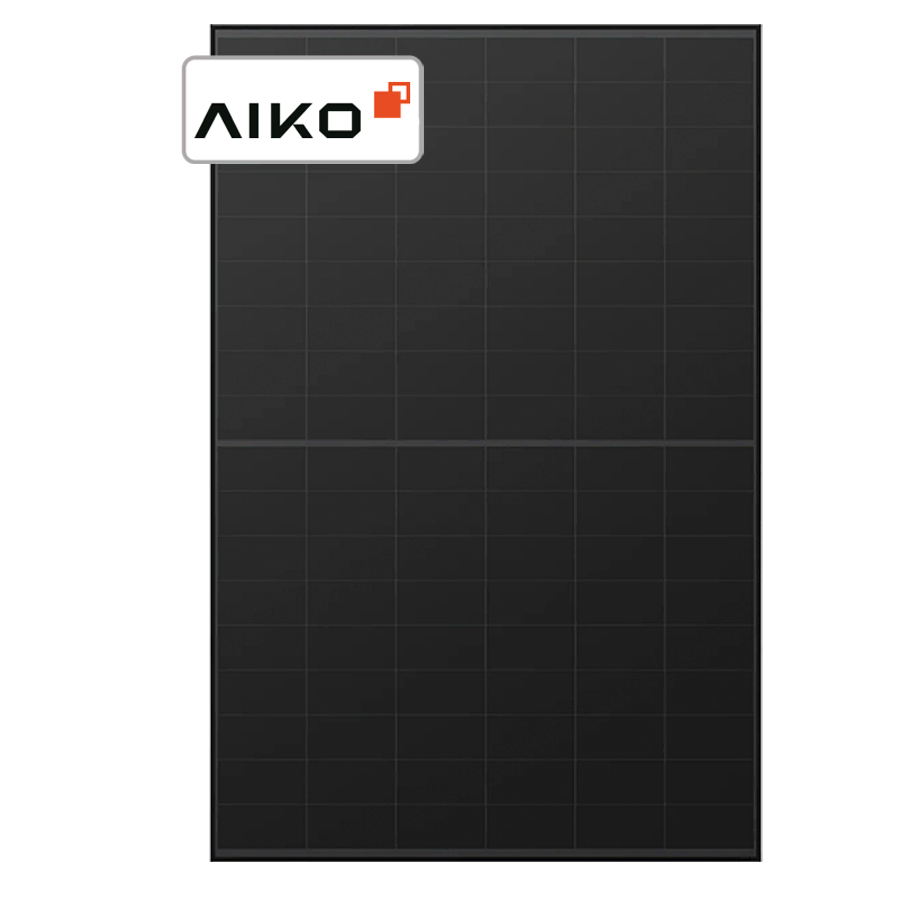
Most innovative: Aiko Energy has developed one of the most efficient solar panels commercially available. The Aiko Neostar range is the residential solar module incorporating an InterSolar Award-winning (2023) ABC n-type architecture complementing Sigenergy’s advanced nature. Learn more ›
$$$
Which is ideal for you
First, determine if you have a single or 3-phase power supply at your property. After selecting the relevant power supply, total daily energy consumption is the next step to gauge appropriate solar array and battery sizing.
Determining time-based energy consumption will assist a more comprehensive Sigenergy SigenStor battery (kWh) to solar panel (kW) ratio. Without time-based energy use information, consider approximately how much energy you consume during the day and night. An example of this could be 40% day and 60% night. With basic energy use knowledge alongside your energy bill information, we can design the ideal Sigenergy SigenStor solution to suit your needs.
- Determine if you have a single-phase or three-phase power supply.
- Consider your average daily consumption (check energy bill).
- Is the property suitable to accomodate a set number of solar panels to supply SigenStor?
- If solar panels aren't an option, consider SigenStor for dynamic tariff utilisation, and superior DC EV fast charging with bidirectional capabilities.
Designed for a new generation of energy users, Sigenergy incorporates the unrivalled user experience most expect from 2024. Building advanced hardware to suit superior software, empowering users throughout an ever-changing energy landscape. But this isn’t just spin. Sigenergy’s global case studies are convincingly good in diverse global locations. Once in a decade, an energy product arises and shapes a new direction through superior design and user experience. SigenStor is this decades.
Seeking a Sigenergy solution? A proven partner based in Perth, Western Australia, we can assist. Related: Sigenergy Partners with Perth Solar Warehouse ›

